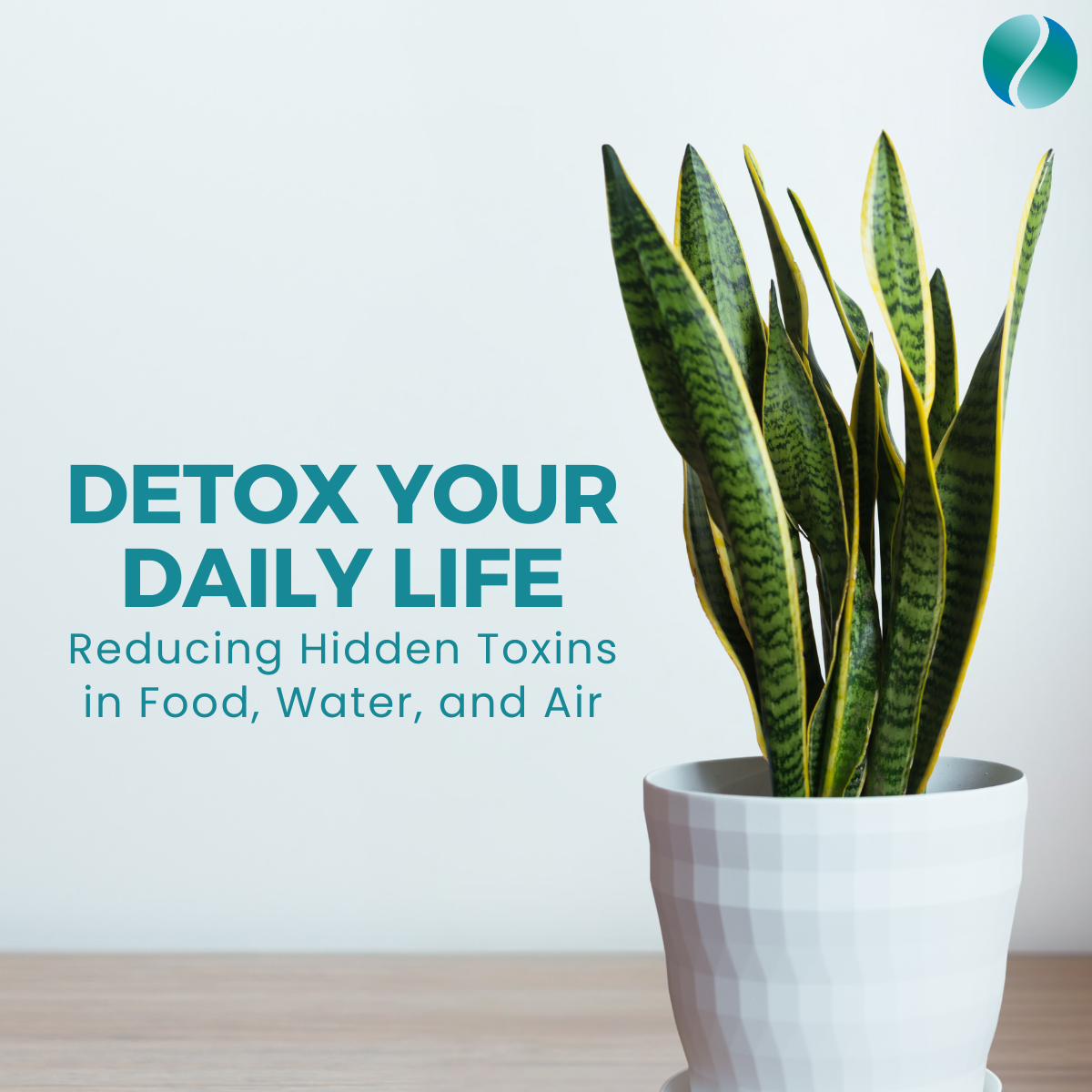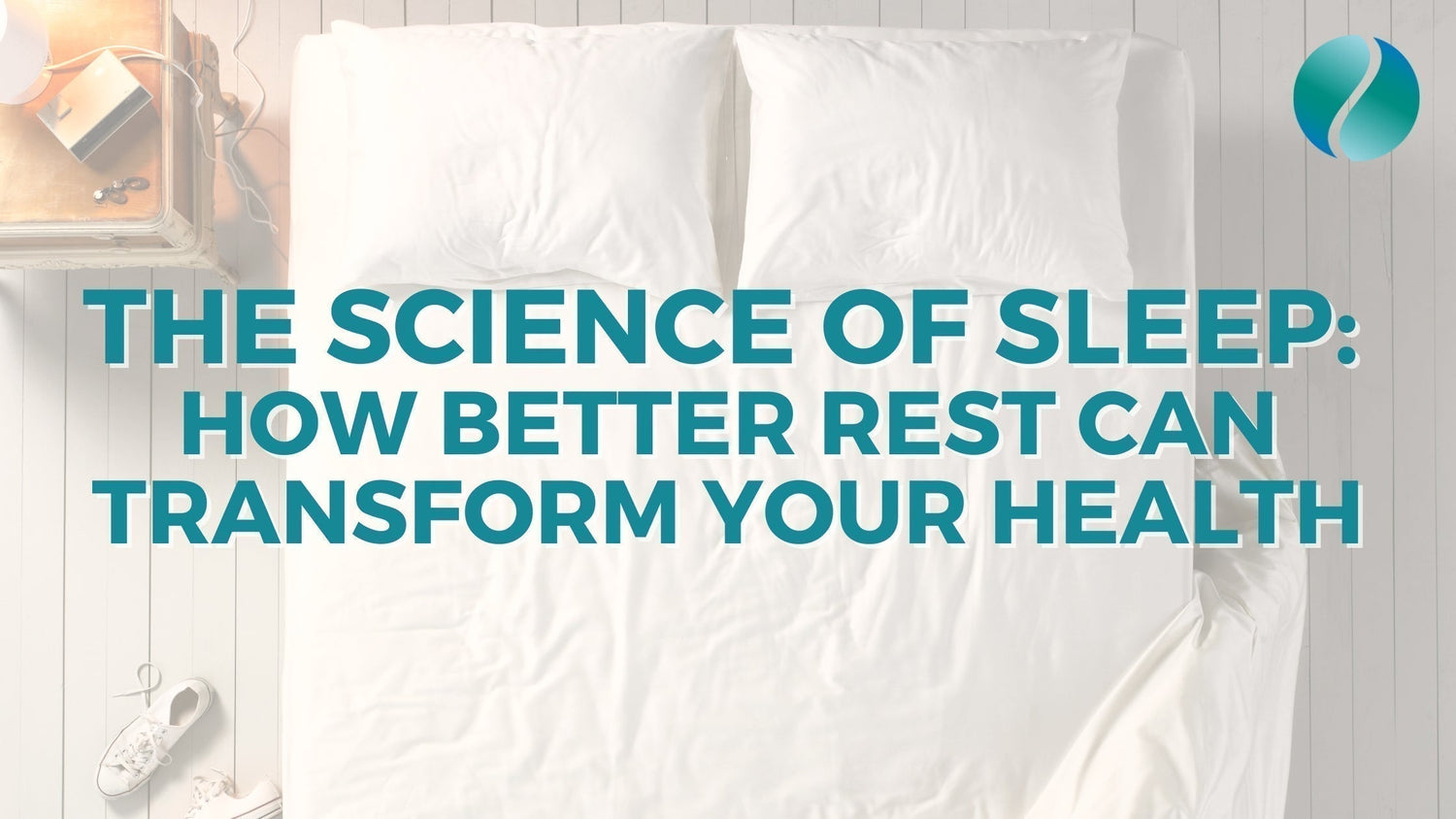Every moment of the day, we unknowingly come into contact with invisible threats—toxins that lurk in the food we eat, the water we drink, and the air we breathe. While these hidden dangers may feel overwhelming, taking control of your health starts with knowledge.
From pesticides in produce to chemicals in our water supply and airborne pollutants in our homes, this blog will guide you through simple, practical steps to minimize exposure and create a safer, healthier environment for you and your loved ones. Let's dive in and start transforming your daily life—one clean breath, bite, and sip at a time.
Toxins in Food: Choosing Cleaner Options

Food is one of the most significant sources of toxin exposure. Conventionally grown fruits and vegetables are often treated with synthetic pesticides and fertilizers that leave behind residues, while processed foods contain harmful additives and chemicals.[1.]

How to Reduce Exposure:
- Choose Organic Wisely: Whenever possible, buy organic produce. Focus on the "Dirty Dozen," a list of the most pesticide-heavy fruits and vegetables updated annually by the Environmental Working Group (EWG). For lower-pesticide options, refer to the "Clean 15."
- Ditch Processed Foods: Processed foods often contain harmful preservatives, additives, and packaging chemicals like Bisphenol A (BPA). Opt for fresh, whole foods and prepare meals from scratch to avoid unnecessary toxins.
- Store Safely: Use glass or stainless steel containers instead of plastic to minimize chemical leaching into your food.
Toxins in Water: Staying Hydrated Safely

Water is essential to life, but it can also be a source of toxins if it's contaminated. Depending on where you live, tap water can contain a variety of pollutants, including chlorine, heavy metals like lead and mercury, and even traces of pharmaceuticals.[2] Bottled water isn’t always safer, as plastic bottles can leach chemicals, especially when exposed to heat.

How to Ensure Clean Water:
- Invest in a Quality Water Filter: Depending on your needs, consider a pitcher filter, under-sink filter, or a reverse osmosis system to remove contaminants effectively.
- Avoid Plastic Bottles: Instead, use reusable glass or stainless steel bottles to store and transport your water.
Improving Air Quality: Breathing Cleaner Indoors and Out

Air quality is another major source of toxin exposure. Outdoor air pollution from vehicle exhaust and industrial emissions can harm respiratory health.[3] However, indoor air pollution—caused by VOCs from furniture, cleaning products, and even paint—can be even worse.
How to Improve Air Quality:
- Use Air Purifiers: A good air purifier can filter out pollutants, allergens, and airborne toxins, particularly in areas with high outdoor pollution.
- Ventilate Regularly: Open windows to allow fresh air in and reduce indoor pollutant buildup.
- Incorporate Indoor Plats: Certain plants, like snake plants and peace lilies, naturally filter toxins and improve air quality.[4]

Practical Tips for Reducing Toxins
Reducing toxin exposure in your everyday life may seem overwhelming, but small, manageable steps can make a big difference.
While it may seem challenging initially, implementing small changes in your daily routine can lead to significant benefits over time. By making informed choices, such as choosing organic produce, filtering your water, and improving air quality at home, you can protect yourself and your family from the harmful effects of everyday toxins.
Resources:
[1] Brial, François, and Xavier Coumoul. “Pesticides : ce qui est connu ou suspecté de leur action délétère sur la santé” [Pesticides : what is known or suspected about their harmful effects on health]. La Revue du praticien vol. 71,7 (2021): 747-751.
[2] Milovac, Thomas. “Pharmaceuticals in the Water: The Need for Environmental Bioethics.” The Journal of medical humanities vol. 44,2 (2023): 245-250. doi:10.1007/s10912-022-09774-x
[3] Canagaratna, Manjula R et al. “Evolution of vehicle exhaust particles in the atmosphere.” Journal of the Air & Waste Management Association (1995) vol. 60,10 (2010): 1192-203. doi:10.3155/1047-3289.60.10.1192
[4] Wolverton, B. C. (July 1989). "A study of interior landscape plants for indoor air pollution abatement: An Interim Report" (PDF). Retrieved 3 May 2020.





